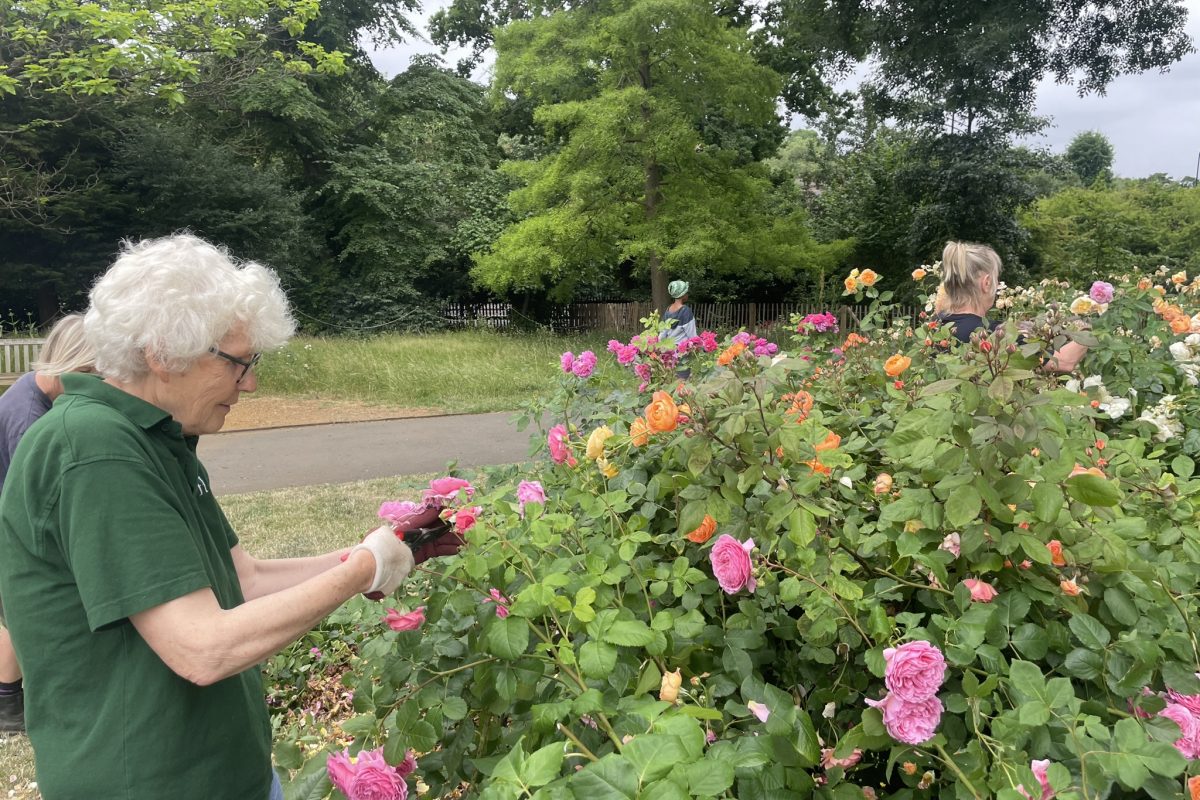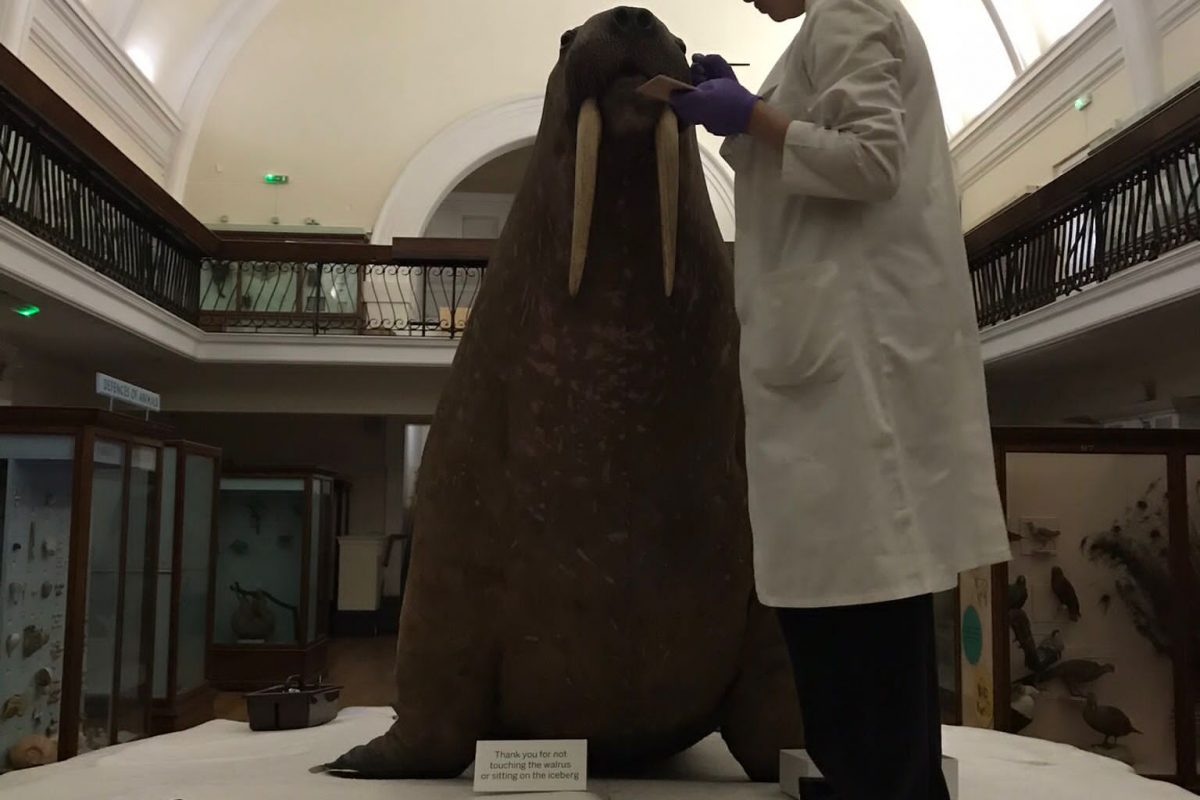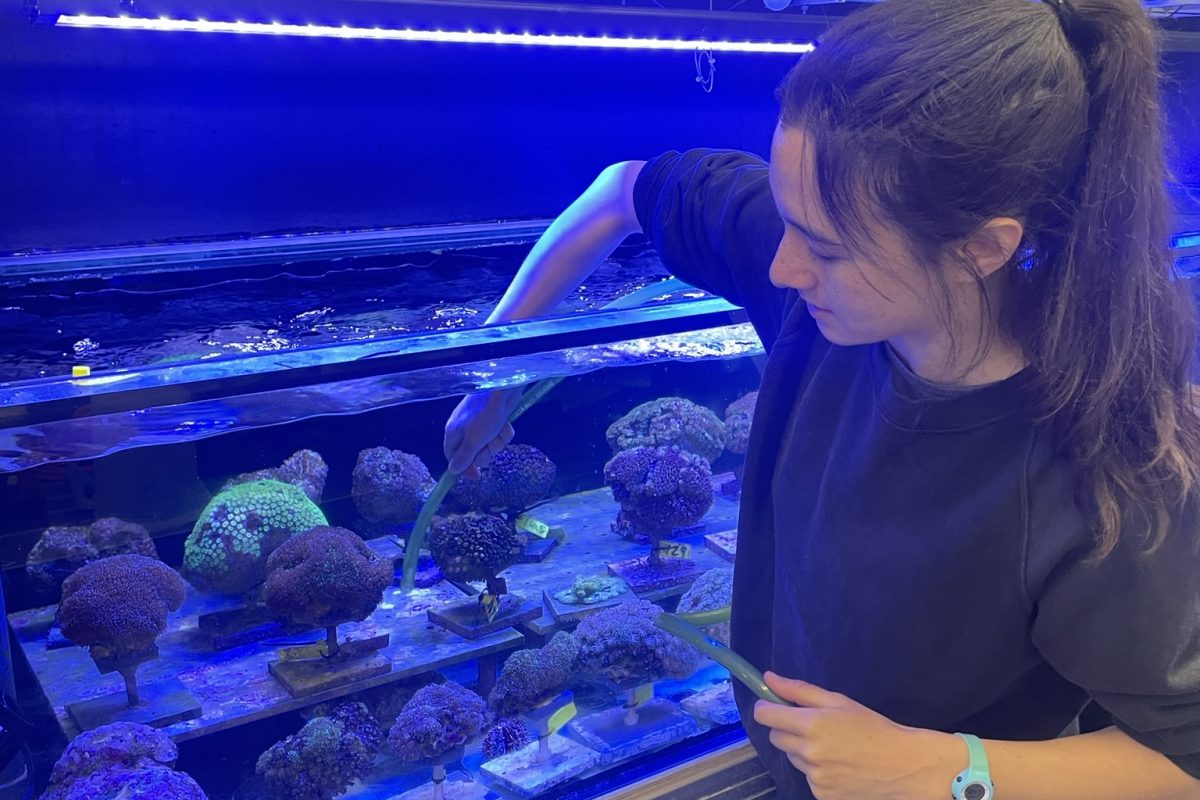Our volunteers play an integral role in the work that we do, assisting us behind the scenes and in visitor-facing roles too.
What Engage volunteers do
Engage volunteers bring the Museum’s collections to life through providing a hands-on experience for visitors. Volunteers provide a live interpretation of the Butterfly House and Aquarium, helping visitors understand our living collections. Within the galleries, volunteers support visitor learning through our touch tables, where visitors can handle objects from our collections.
Jon
Jon is an ex-teacher who now volunteers in his spare time with Engage. Through joining the team, Jon enjoys being able to get away from his desk, meet a wide range of interesting people and gain new skills. For him, Engage is so special because it provides a more stimulating way to interact with the Museum, and a way to continue learning and teaching.
What Jon said
‘My favourite moments are ones where you are being taught by the public. A visitor once pointed out that there was the wrong snake on the information card!’
What Aquarium volunteers do
Aquarium volunteers are highly involved in the day-to-day maintenance and running of the Horniman Aquarium. Tasks range from maintaining the Aquarium displays, preparing and feeding a diverse range of aquatic vertebrates and invertebrates, and assisting in developing new displays. Volunteers work within a nationally and internationally important team that participates in exciting conservation and research projects.
Felicity
Felicity is a Zoology student, who volunteers at the Horniman Aquarium to further her passion for marine biology. Through her time volunteering, she has assisted in a wide range of research projects, and also had the opportunity to conduct her own project as part of her degree. The Horniman Aquarium is able to provide specialised knowledge, as well as real life experience in aquarium management, helping her future career.
What Felicity said
Just apply! You can’t overestimate the experiences you can gain.
What Horticulture volunteers do
Horticulture volunteers are essential to the maintenance of the Horniman’s renowned gardens. Volunteers support the gardens team in a variety of tasks such as weeding, watering, seasonal pruning and assisting in the nursery. The Horniman Gardens consists of 16.5 acres of landscapes featuring a rose garden, sunken garden, ethno-botanical planting and wild flower displays. Volunteers assist in all areas of the Gardens, gaining insight into how to maintain a busy public garden within a supportive learning environment.
Irene
Irene has been volunteering in the Gardens team since 2011, and is an indispensable member of the team. Irene has seen much change to the Gardens throughout her time volunteering, but her contribution has been steady, providing vital help to the Horniman in all seasons. Although she has been volunteering for over a decade, Irene says one of the most enjoyable aspects is the continual learning and variety of tasks.
What Irene said
‘Interacting with the public is always funny, when I was out planting potatoes, I helped some children realise potatoes came from the ground.’
What Conservation volunteers do
Conservation volunteers assist in the maintenance of objects in the Museum’s collections. The galleries in the Horniman Museum are further complemented by a Handling Collection of over 3,700 objects which all need to be cared for. Volunteers help repair broken and damaged objects, undertake cleaning of display cases, carry out regular conservation checks and keep up to date records of object repairs. Volunteers work with a wide range of materials and are trained on how to repair them, providing interesting skills and knowledge.
Anais
Anais is a Conservation student who volunteers within the conservation team at the Horniman. Volunteering at the Horniman has given her an opportunity to learn new conservation techniques, and the Horniman’s focus on climate change has deeply informed her university research. You can see Anais’ work on the fluid specimens and walrus in the Natural History Gallery, and the silver and various other objects in the World Gallery.
What Anais said
‘Seek every learning opportunity and ask lots of questions! The staff fundamentally want to help as they are grateful for your time so are always available for questions and guidance’



